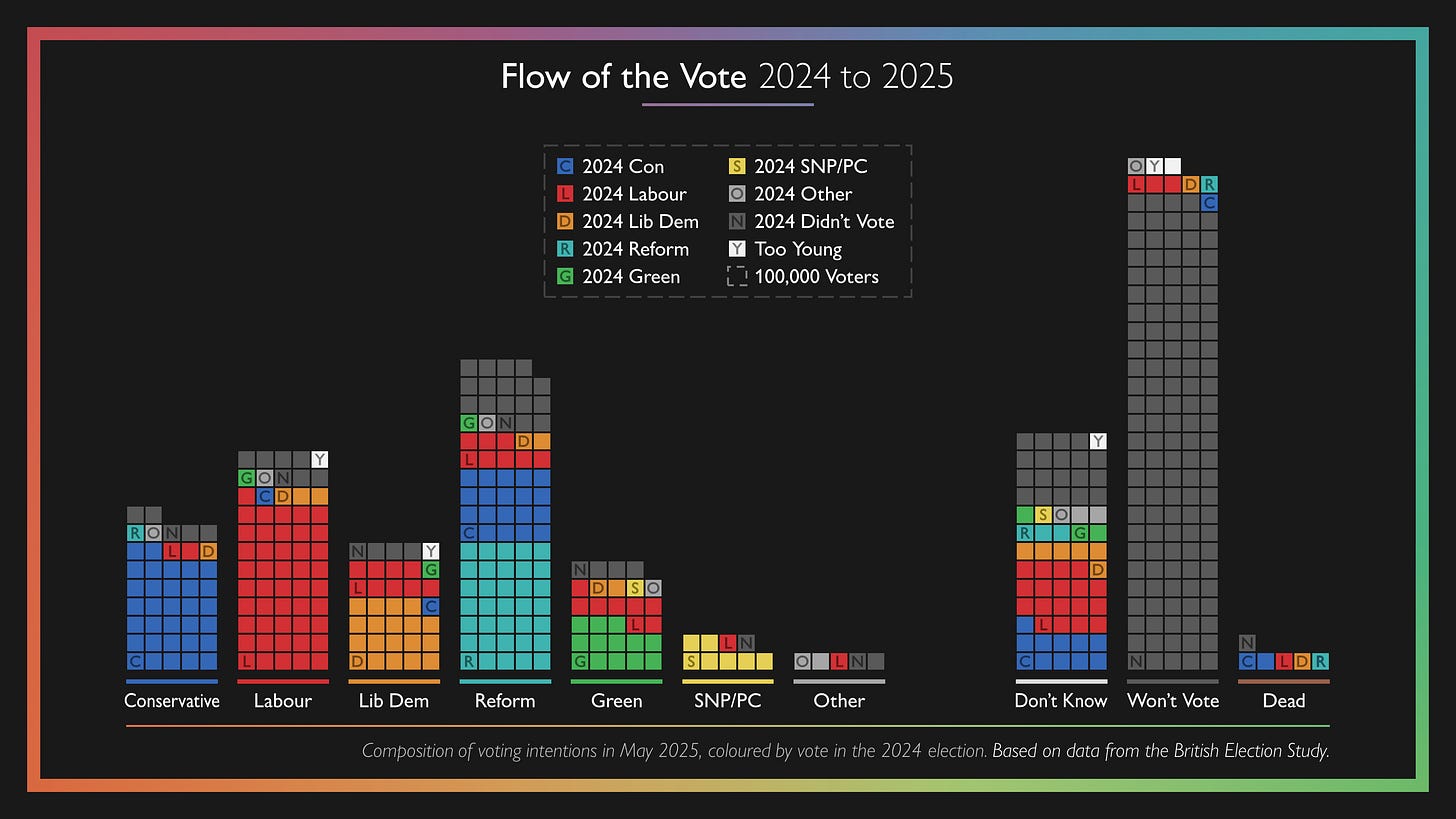We’re delighted to welcome back Dylan Difford, author of today’s post. Those of you who followed our UK election coverage will remember that Dylan wrote numerous posts for us during the campaign using his mastery of data to help explain what was going on. After the election he was recruited by YouGov as a data journalist but writes here in a personal capacity.
In this post he looks at the shifts in support between parties since the election. Later in the week I’ll have a post focusing on the challenges this analysis throws up for Labour, having written about the mess the Tories are in last week.
Last year’s general election saw unprecedented movement between parties, with roughly 10 million Britons casting their vote for a different party to the one they had backed in 2019, while a further 5.5 million moved between voting and not voting.
As we reach a quarter of the way through this parliament, this volatility has not let up,1 with just over half of voters currently sticking with the party they endorsed last July.2 The Conservatives have sunk further since their record defeat, while the unpopularity of the new Labour government is reflected in their headline poll rating falling by 40%.3 Reform have been the biggest gainers.
While these huge shifts in the polls are well known, the nature of the movements between parties are widely misunderstood, leading to misdiagnoses of the challenges facing each party. Many, for instance, take Labour being down around 14 points in the polls and Reform being up a similar number as evidence of this being the main voter migration taking place. This isn’t the case.
To get a better understanding of what is happening, we can use the huge sample sizes of the May 2025 wave of the British Election Study (BES) and YouGov’s July 2025 study of why people have changed their minds to identify the actual flow of the vote over the last 15 months, what is causing it and how it could change.4
Flow of the vote
Using the BES data, we can show where 2024 voters have moved since the election.5 Each block represents 100,000 voters in the colour of their 2024 vote. There are undoubtedly some shifts people will find perplexing: for instance, roughly 100,000 voters have moved from the Greens to Reform. This is a useful reminder of the esoteric nature of political choices, but the key is to focus on the larger and more consequential movements, which we’ll look at in turn.
Keep reading with a 7-day free trial
Subscribe to Comment is Freed to keep reading this post and get 7 days of free access to the full post archives.



